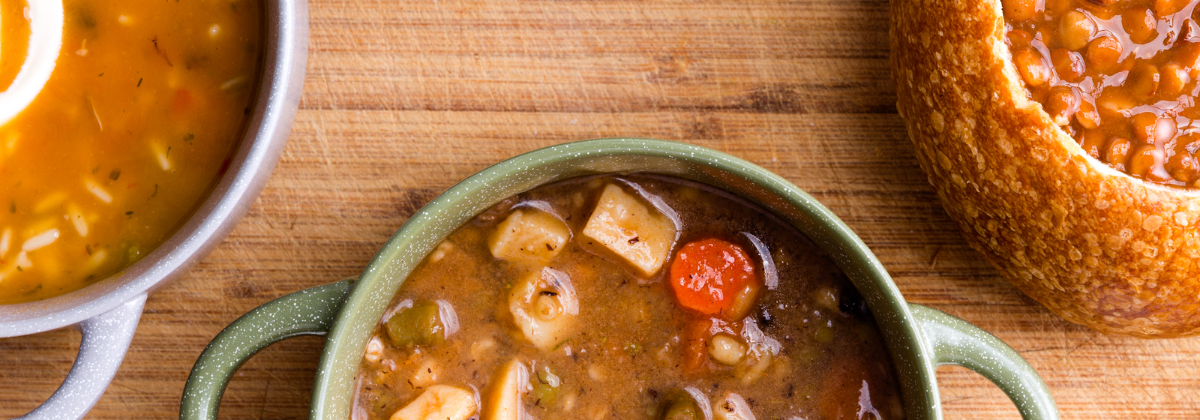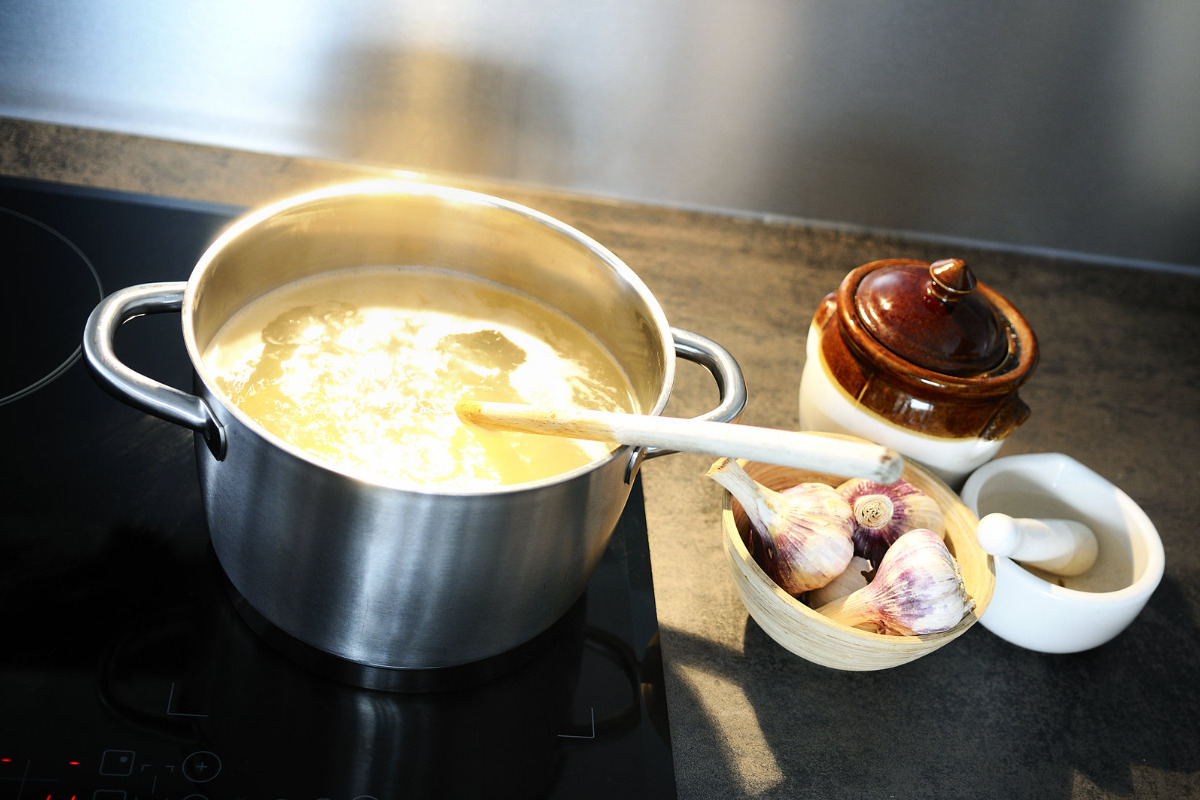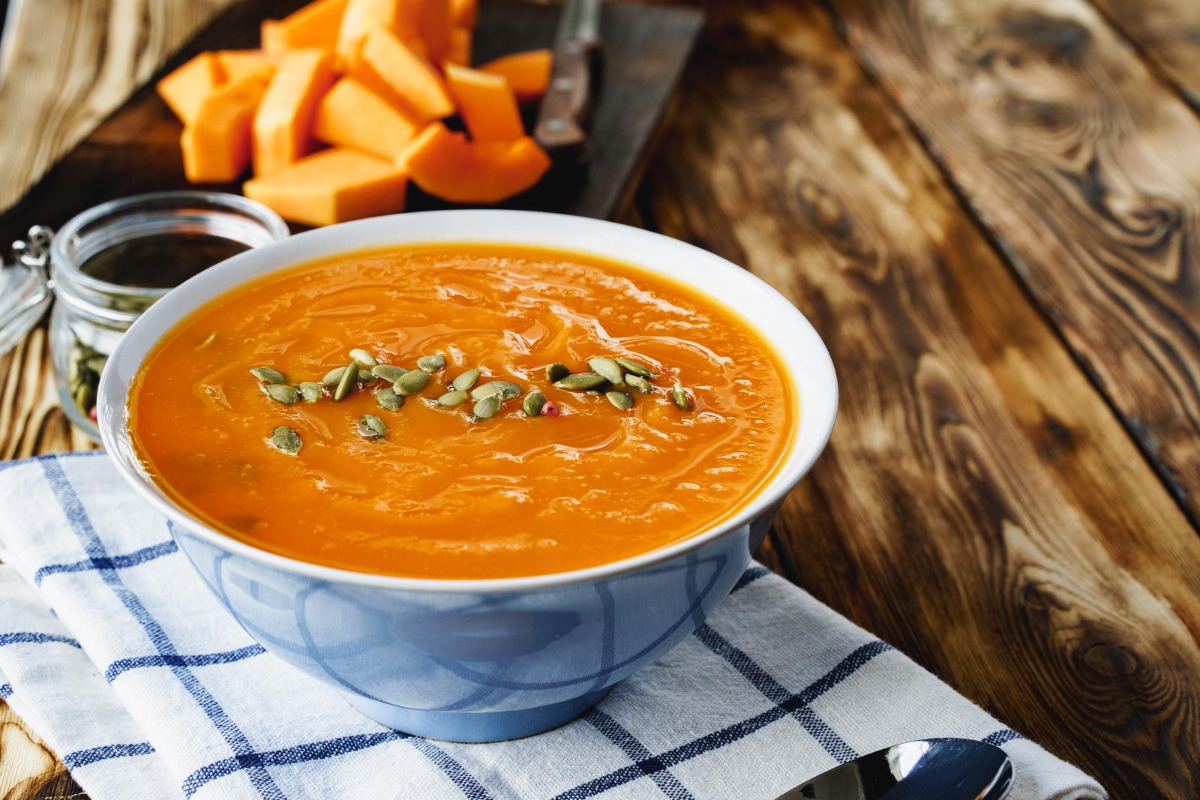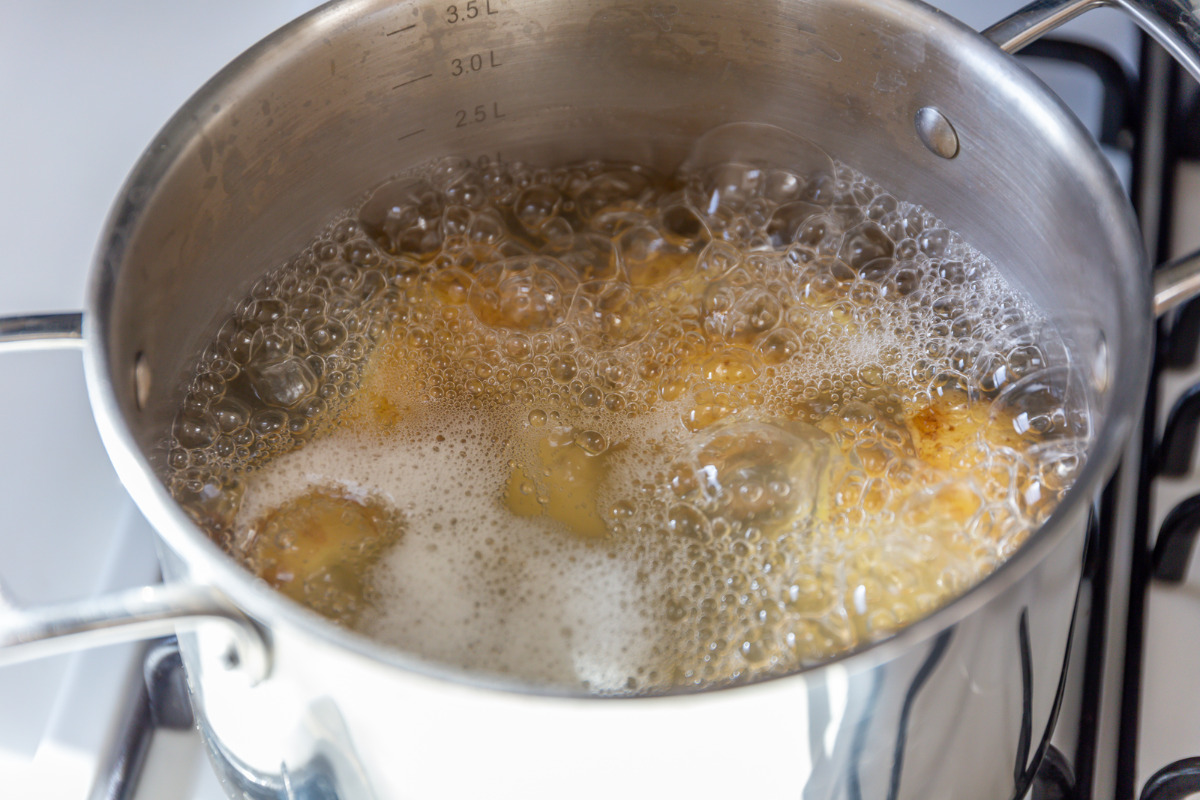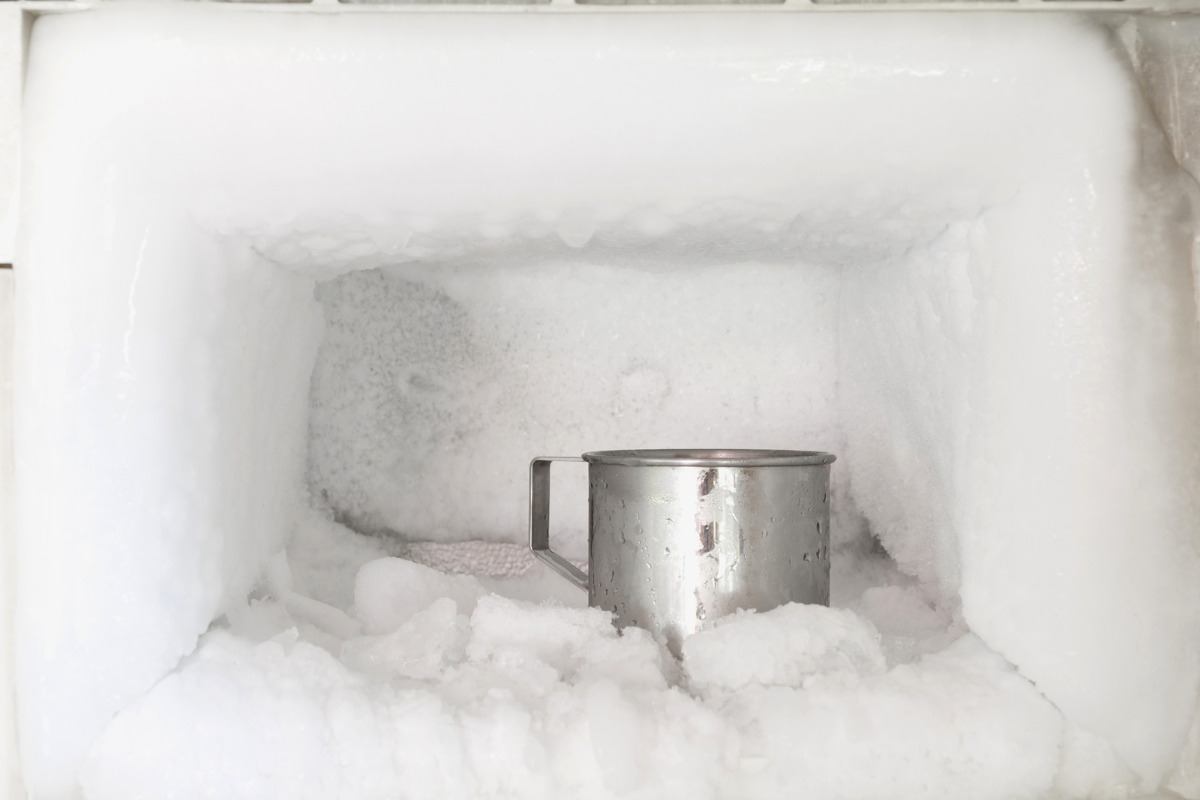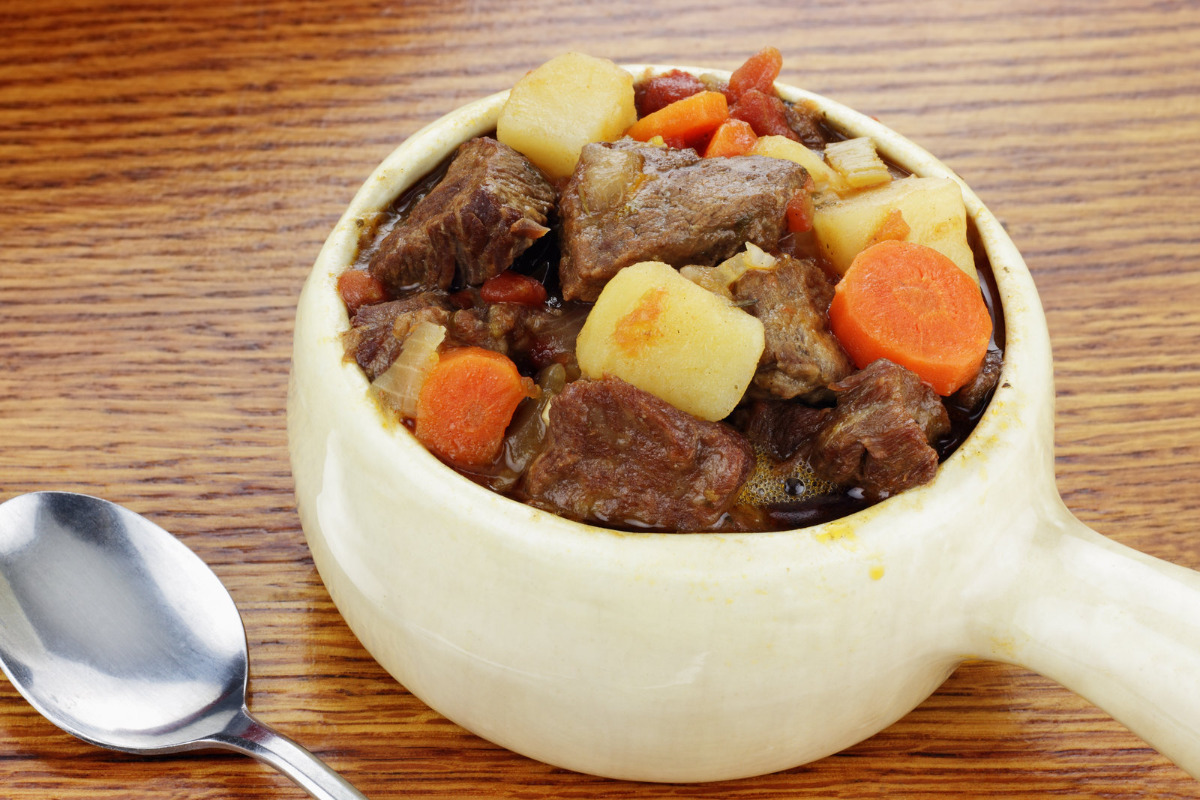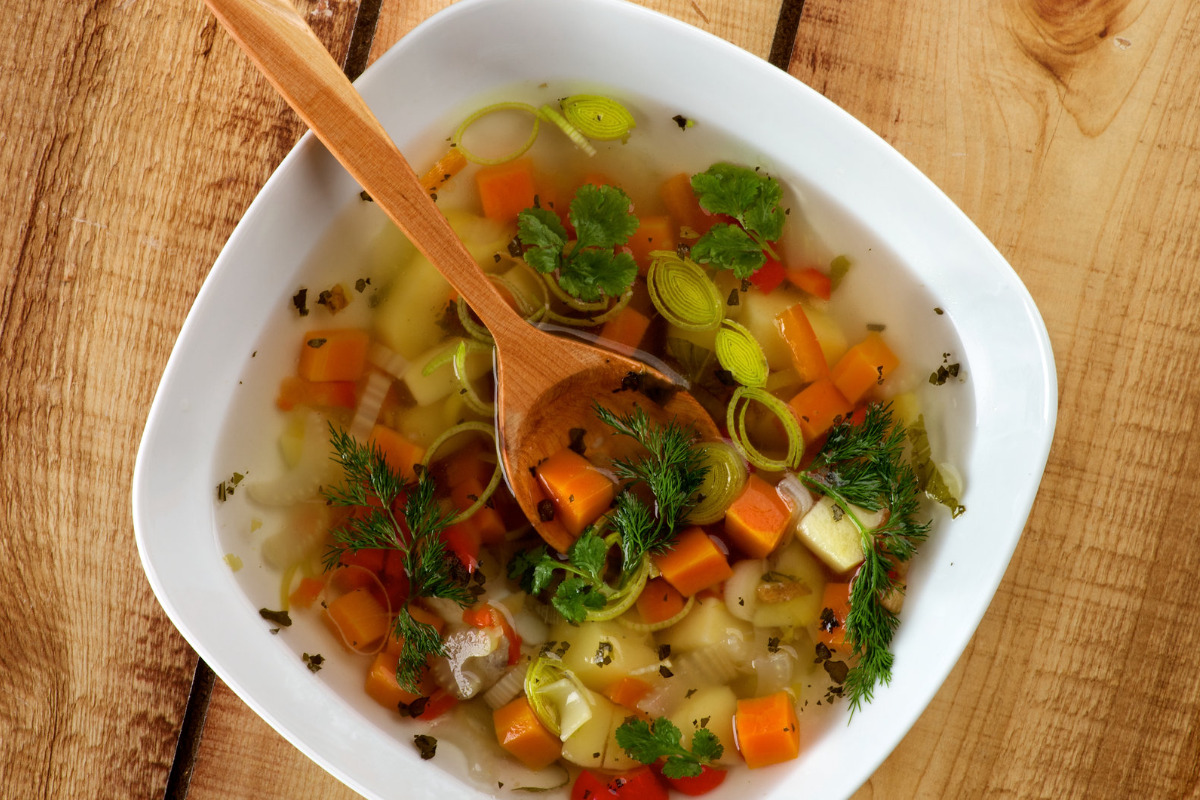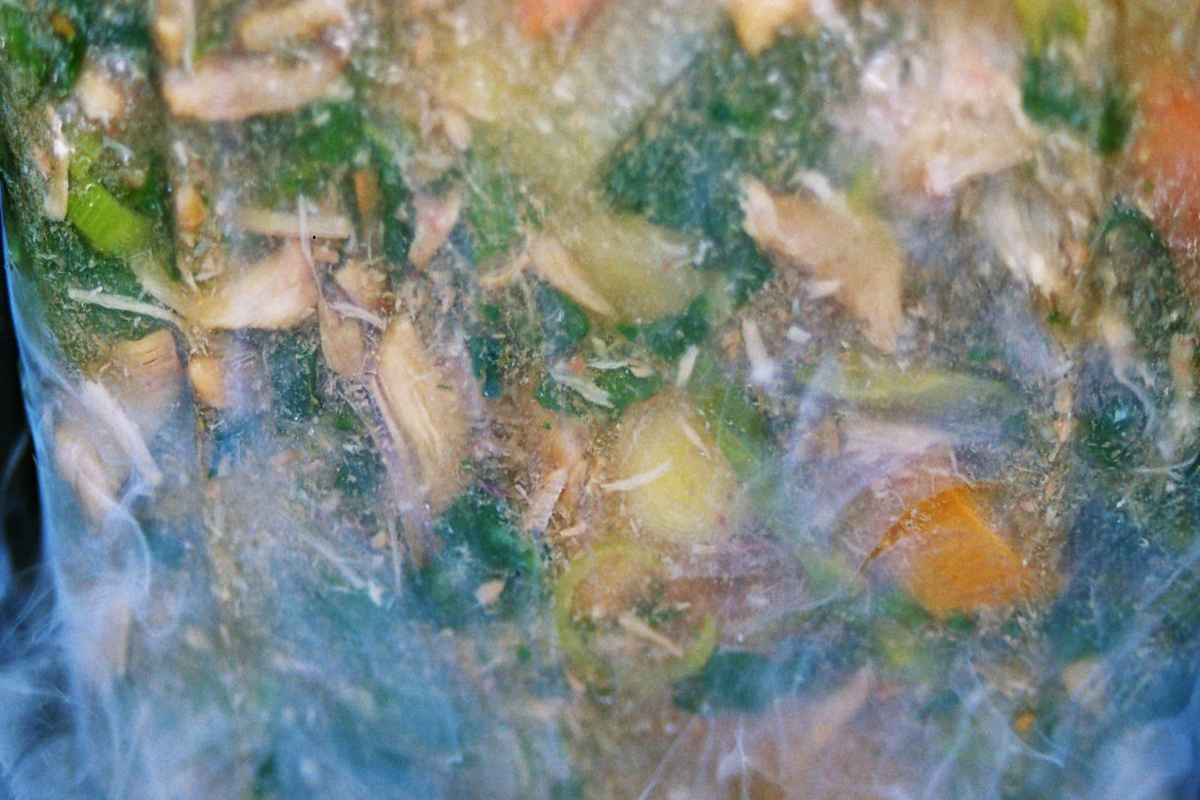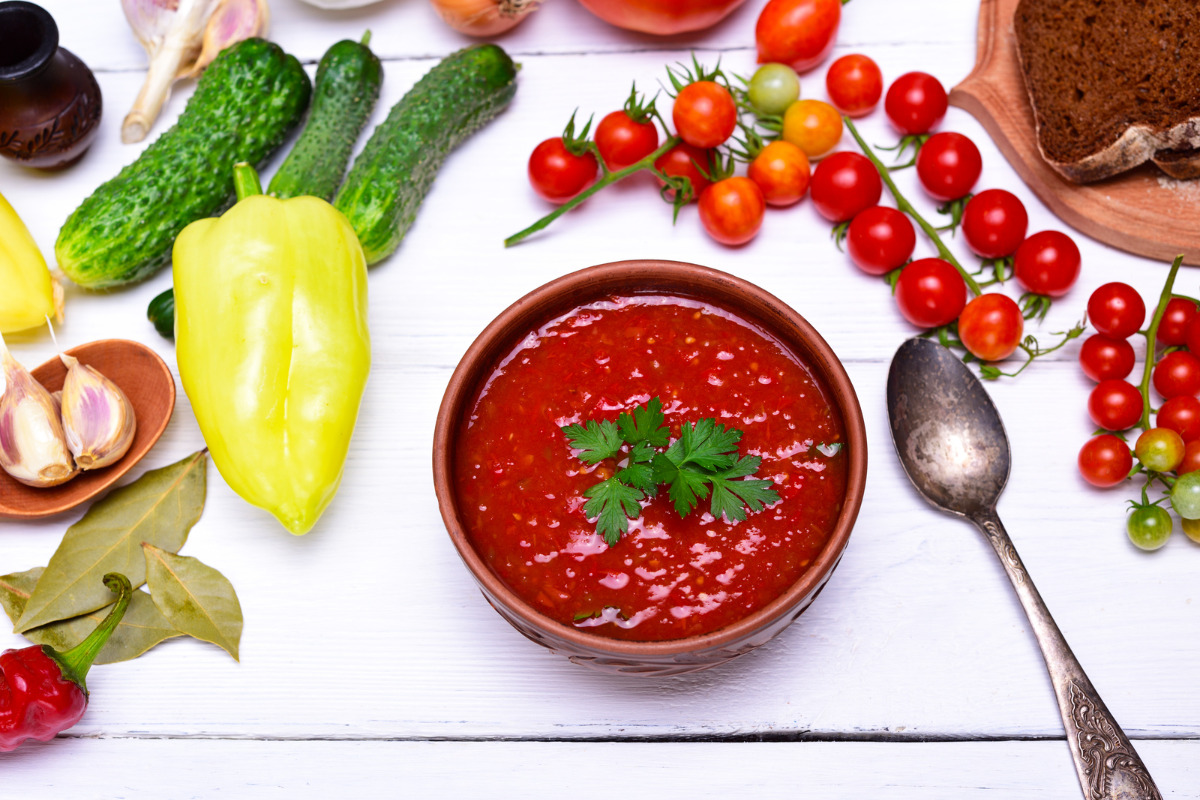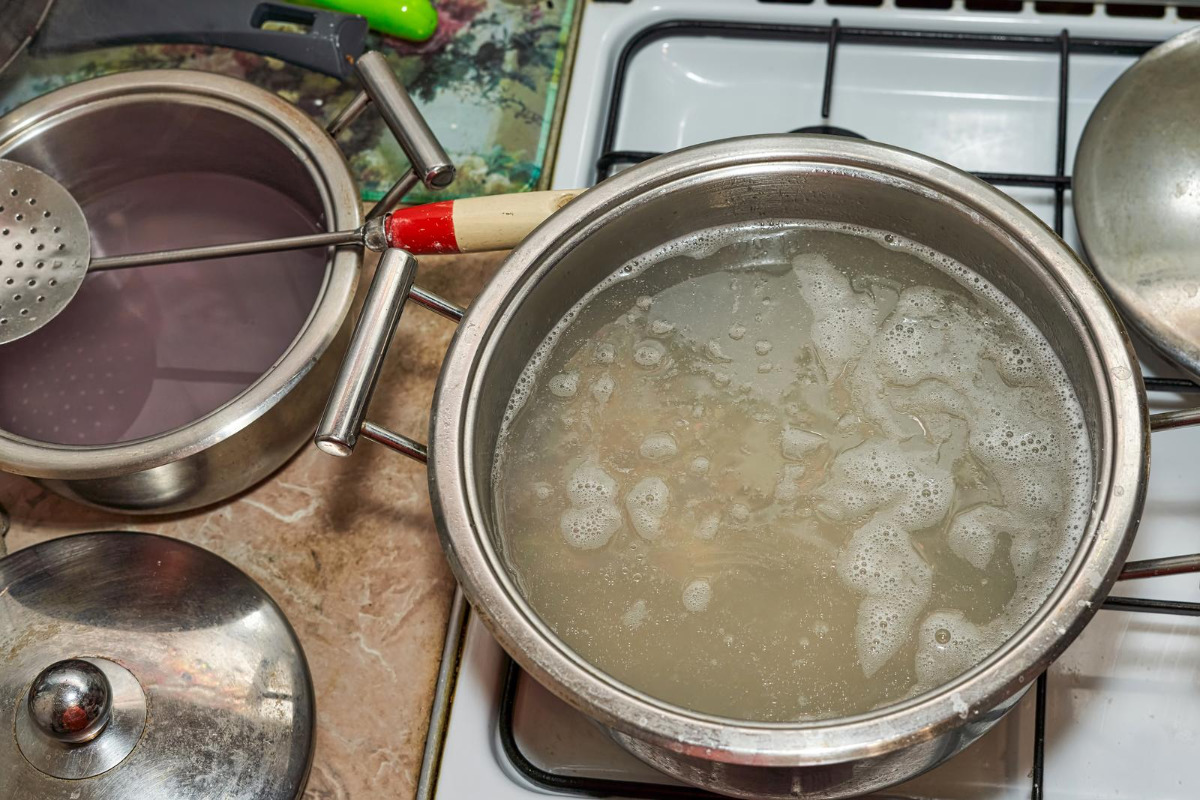Chicken and sauces aren’t the only things fast food restaurants serve up. They know how to make soup creamy, delicious, and quick to make all in one. But with all the different types of soup out there, which are the best soups from fast food restaurants that you should pick? Well, restaurants like Panera Bread serve broccoli cheddar soup, Olive Garden serves zuppa Toscana soup, and Chick-fil-A serves a classic chicken soup. But there are tons more! So, let’s tuck in.
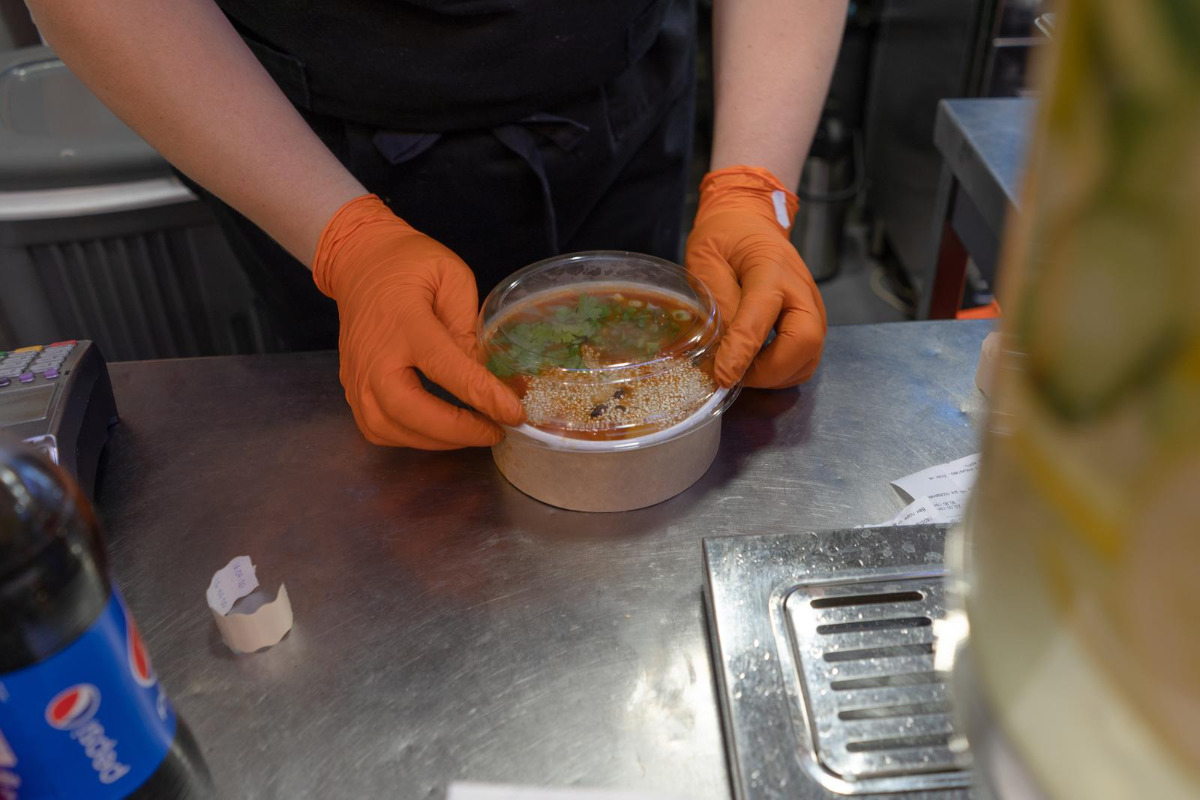
🍲 Common Types of Soup Fast Food Restaurants Have
Chicken Noodle Soup
Chicken noodle soup is a staple at fast food chains like Panera Bread, Chick-fil-A, and Wendy’s. These restaurants offer classic soups and side parings for any and all customers. It’s a go-to choice for those seeking a familiar and comforting option. This soup typically consists of chicken broth, chicken pieces, egg noodles, and vegetables such as carrots, celery, and onions.
Tomato Basil Soup
Tomato basil soup is frequently found at fast-casual establishments like Panera Bread, Corner Bakery Cafe, and Au Bon Pain. It’s a very popular choice for those looking for a light, vegetarian option made from ripe tomatoes, fresh basil, garlic, onions, and other herbs and spices. It’s often served hot and garnished with a dollop of cream or a sprinkle of Parmesan cheese.
Broccoli Cheddar Soup
Broccoli cheddar soup is a signature dish at Panera Bread, Subway, and Quiznos. These eateries serve up this creamy and cheesy soup, providing a satisfying blend of vegetables and dairy. This soup usually contains broccoli florets, cheddar cheese, cream, and seasonings.
Vegetable Barley Soup
This type of soup can be found at health-conscious fast food chains like Panera Bread, Sweetgreen, and Freshii. It’s a wholesome and nutritious option for health-conscious people, perfect for these restaurants. The soup is typically packed with a variety of vegetables like carrots, potatoes, onions, and peas, along with pearl barley.
😋 Best Soups from Fast Food Restaurants
Panera Bread: Broccoli Cheddar and Chicken Noodle Soup
Panera Bread is a renowned name in the fresh and healthy food scene. It has two of the best soups from fast food restaurants to date, with their Broccoli Cheddar and Chicken Noodle Soup. The Broccoli Cheddar Soup is a creamy and cheesy soup with 370 calories and is made with fresh broccoli, carrots, and onions. The Chicken Noodle Soup is a classic comfort food made with tender chicken, egg noodles, and vegetables.
Tim Hortons: Tomato & Feta Soup and Potato with Bacon Soup
The Canadian fast food chain King serves up fantastic coffee, donuts, and…soup? That’s right! Tim Hortons serves up two delicious soups. The Tomato & Feta Soup is a creamy and flavorful soup made with tomatoes, feta cheese, and herbs, while the Potato with Bacon Soup is a hearty and filling soup made with potatoes, bacon, and cream.
Chick-fil-A: Chicken Soup and Chicken Tortilla Soup
Delicious chicken isn’t the only thing on the menu at Chick-fil-A. They also have a delicious soup collection. The Chicken Soup is a classic comfort food made with tender chicken, carrots, and celery. All this for just 280 calories with their Chicken Soup Bowl. The Chicken Tortilla Soup is something quite special. It’s a spicy and flavorful soup made with shredded chicken, corn, and black beans.
Quiznos: Broccoli Cheddar Soup
Despite the scarcity and sad downfall of this chain, Quiznos still makes a delicious broccoli Cheddar Soup that can compete with others. This creamy and cheesy soup is made with fresh broccoli, carrots, and onions and sits between 120 and 220 calories. The soup can pair perfectly with a sandwich or salad or just enjoyed by itself.
Olive Garden: Zuppa Toscana, Pasta e Fagioli, and Minestrone
The Italian icon delivers not only delicious pasta dishes but also fantastic soups. Three of the most popular soups at Olive Garden are the Zuppa Toscana, Pasta e Fagioli, and Minestrone.
The Zuppa Toscana is a spicy soup made with sausage, potatoes, and kale, while the Pasta e Fagioli is a hearty soup made with pasta, beans, and vegetables. The Minestrone soup takes a step away from these two with its classic combination of tomatoes, beans, and pasta.
Au Bon Pain: French Onion Soup
Au Bon Pain is a top-tier fast-casual chain known to many for its baked goodies. But alongside its pastry companions lies a delicious classic French Onion Soup. This soup has only 110 calories and features tasty caramelized onions simmered in a rich beef broth, topped with a toasted baguette slice and melted cheese for a classic French-inspired treat.
Wendy’s: Chili
Wendy’s burgers and fries aren’t the only reason they have the crowds running to them. They also serve up a hearty and flavorful Chili. It’s also both a deliciously warm and filling meal made with ground beef, kidney beans, tomatoes, and a blend of spices that packs only 253 calories.
Legal Sea Foods: New England Clam Chowder
This seafood giant has dabbled in the world of soups, and they came back with a classic. Legal Sea Foods offers a fantastic classic New England Clam Chowder. This rich and creamy soup features tender clams, potatoes, onions, and savory seasonings, capturing the essence of traditional New England flavors.
Subway: Soup of the Day
A true pioneer of the Subway sandwich. Subway stands tall in the sandwich scene, but did you know they also have soups? The soups vary by location and season, but some popular options include Chicken Noodle Soup, Broccoli Cheddar Soup, and Tomato Soup.
The former is made of fresh broccoli florets, creamy cheddar cheese, and a blend of seasonings, while the latter is crafted from ripe tomatoes, aromatic basil, onions, garlic, and spices.
Noodles & Company: Wisconsin Mac & Cheese Soup
Noodles & Company isn’t a restaurant that should be overlooked. They’re known for their diverse selection of tasty noodle dishes. They offer a delicious twist on classic comfort food with their Wisconsin Mac & Cheese soup. At 530-1050 calories, this soup combines the flavors of macaroni and cheese with a creamy soup base. Topped with crispy bacon bits and green onions, it’s just a hearty and delicious American fusion meal.
🧐 Frequently Asked Questions
If you are looking for the best soup from a fast food restaurant, you might want to check out Panera Bread. The restaurant chain is known for its wide range of soups, including customer favorites such as the broccoli cheddar soup.
Panera Bread offers vegetarian and gluten-free options. Some of their other soups include broccoli cheddar soup, home style chicken noodle soup, cream of chicken and wild rice soup, Thai chicken soup, and cream of tomato soup.
Chick Fil A offers a few soup options, including the chicken noodle soup and the chicken tortilla soup.
Some top-rated soups offered by fast food chains include the broccoli cheddar soup from Panera Bread, the clam chowder from Legal Sea Foods, the chicken noodle soup from Chick Fil A, and the chili from Wendy’s.
